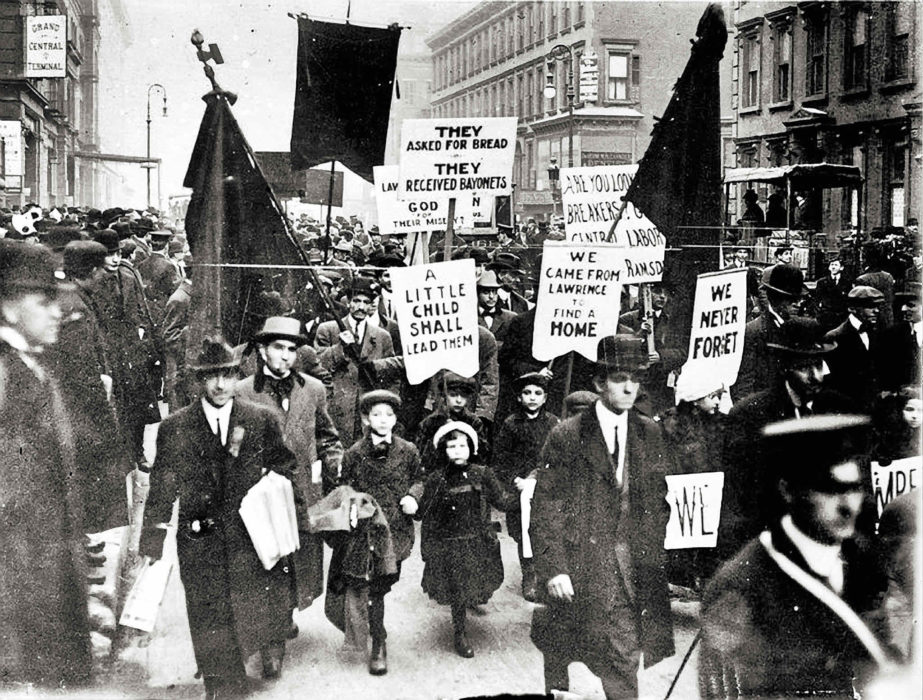THE PROGRESSIVE ERA IN the United States began in a flurry of public energy early in the last decade of the nineteenth century. After the Civil War, widespread industrialization transformed American life. Huge new corporations called trusts swallowed competitors and concentrated wealth and power in the hands of a few men: owners of banks and railroads, of oil and steel companies, of mines and textile factories. Unregulated railroads raised cargo rates, putting small producers at a disadvantage, an international market system eroded the livelihoods of farming families, and urban living conditions deteriorated as millions of European immigrants and poor rural Americans flocked to dangerous factory jobs in swelling cities like Chicago and New York.
Such inequalities, many believed, undermined the core values inherent in the promise of America: a land of fairness where hard work paid off; where the tired, poor, huddled masses could escape from a Europe ruled by rigid hierarchies of class and birth; where each person should be able to control his or her own destiny. Could a democratic form of government even survive in the modern industrial age?
The showdown arrived in 1893. Farm incomes had been falling for three years, sparking a populist movement in the farming states of the South and the Plains. Now, a combination of overextended railroads, soft British and French economies, a run on banks, and a shortage of gold sent the country into the deepest depression it had ever known: unemployment reached 35 per cent in New York and 45 per cent in Michigan. But President Grover Cleveland, a Democrat, didn’t believe government should provide economic relief, so he did nothing. When 4000 employees of the Pullman Palace Car Company walked off the job, he sent in the army to force them back to work at gunpoint. When Jacob Coxey’s army of demonstrators marched on Washington, Cleveland ordered his soldiers to beat them back.
The citizens who took it upon themselves to reform American life between 1890 and 1920 called themselves Progressives. The most famous of them were muckraking journalists like Ida Tarbell, Ray Stannard Baker, and Lincoln Steffens, who harnessed public opinion to take on corrupt political machines and overbearing monopolies; urban reformers and consumer advocates like Jane Addams in Chicago and Florence Kelley and Lilian Wald in New York who applied new social sciences—sociology, psychology, economics, statistics—to the problems of poor urban neighborhoods, the plight of single mothers, child labor, and general social uplift; suffragists like Susan B. Anthony, Anna Howard Shaw, and Alice Paul, who knocked down opposition to the women’s vote in state after state; and two presidents, Theodore Roosevelt and Woodrow Wilson, who transformed the nation’s highest office into a “bully pulpit”: a platform for giving voice to the aspirations of all the people, and for using the federal government to solve the injustices of the industrial age. “Progressivism,” historians Arthur Link and Richard McCormick wrote in their seminal 1983 book of that title, “was the only reform movement ever experienced by the whole American nation.”

The optimistic Americans ‘Abdu’l-Bahá met in 1912 lived on the cresting heights of a twenty-year-long wave of frenzied reform activity unprecedented in American history. The watershed election of that year incarnated a wide-ranging national debate about the future of America’s economic, social, and political structure. Within four years the major planks of the progressive movement had been enacted by Congress and the Democratic administration of Woodrow Wilson.
But then something almost no one had foreseen sent dominoes dropping across the continent of Europe.
On March 19, 1917, two weeks before he would ask a special session of Congress for a declaration of war against Germany, President Wilson unburdened his heart to his friend Frank Cobb, the editor of the New York World. “Once lead this people into war,” he lamented, “and they’ll forget there ever was such a thing as tolerance. To fight you must be brutal and ruthless, and the spirit of ruthless brutality will enter into the very fibre of our national life, infecting Congress, the courts, the policeman on the beat, the man in the street . . . . If there is any alternative, for God’s sake, let’s take it!” Wilson worried about open conflict, but the truth was that rifts engendered by the distant war had already begun to tear at America’s social fabric. Anti-German sentiment among natural-born American citizens was turning into paranoia directed at immigrants from central Europe. Campaigns broke out across the country to stop teaching German in schools, to burn German books, to outlaw German music, and to change familiar German names, like “hamburger” and “sauerkraut.” A new Committee on Public Information took the techniques progressives had forged to harness public opinion, and built them into a government propaganda campaign designed to generate popular fervor for war, to push for press censorship, and to silence dissent. Congress passed a spate of new laws granting broad powers to the government to imprison or fine anyone obstructing the war effort, or criticizing the government or the military. Progressives stopped fighting for justice and social reform at home, and diverted their energy into mobilizing the nation’s resources for an armed struggle abroad, to make the world “safe for democracy.”
In the upheaval of the Great War, the political unity that the progressives had tried to forge melted down. “Progressivism waned after 1917,” Link and McCormick write, “not primarily because of the war, but more because of the revival of profound social divisions and a growing intellectual malaise with reform.” Idealists were alienated by the government’s suppression of civil liberties. The isolationists were outraged by Wilson’s involving America in Europe’s squabbles. The labor unions did not take kindly to the coercion of coal miners, failures to regulate railroads, and the government’s ambivalent attitude toward the strikes in 1919 and 1920. And a new generation of intellectuals and opinion makers, such as Walter Lippmann and H. L. Mencken, led a defection en masse from the ideals cherished by the progressive reformers. “For a few years,” Link and McCormick conclude, “progressivism had seemed capable of uniting reformers into a majority political coalition under the aegis of the Democratic party. In retrospect, it is clear that progressives always had been too diverse to remain united in a cohesive national political organization.”

In 1912, ‘Abdu’l-Bahá had argued that political coalitions, and social and diplomatic approaches to America’s problems would, of themselves, prove inadequate to the challenges of the modern age. “The bonds which hold together the body politic are not sufficient,” he said on October 7 in Oakland, “. . . for how often it happens that people of the same nation wage civil war amongst themselves.” “Another means of seeming unity,” he told a group in Chicago on September 16, “is the bond of political association, where governments and rulers have been allied for reasons of intercourse and mutual protection, but which agreement and union afterward became subject to change and violent hatred even to the extreme of war and bloodshed.” In early March, 1917, a month before America declared war, ‘Abdu’l-Bahá reiterated his point. Patriotism, nationalism, political institutions, shared interests and ideals, he argued, are “the matter and not the substance, accidental and not eternal—temporary and not everlasting. With the appearance of great revolutions and upheavals, all these collective centers are swept away.”
“What is real unity?” ‘Abdu’l-Bahá had asked a Unitarian congregation in Brooklyn on June 16th. “The unity which is productive of unlimited results,” he argued, “is first a unity of mankind. . . . For they all breathe the same atmosphere, all inhabit the same earth, all are sheltered beneath the same heaven, all receive effulgence from the same sun, all are under the protection of one God.”






